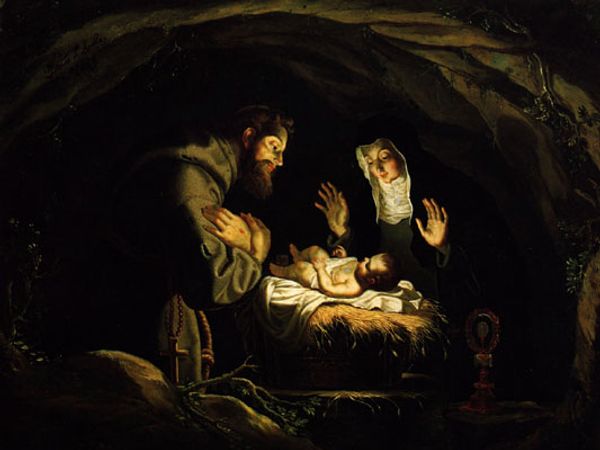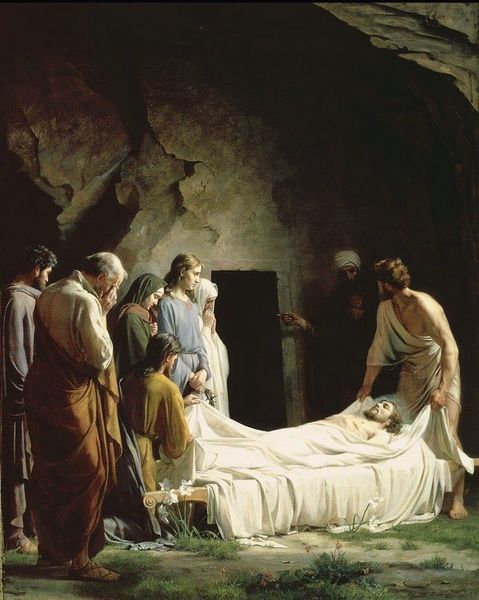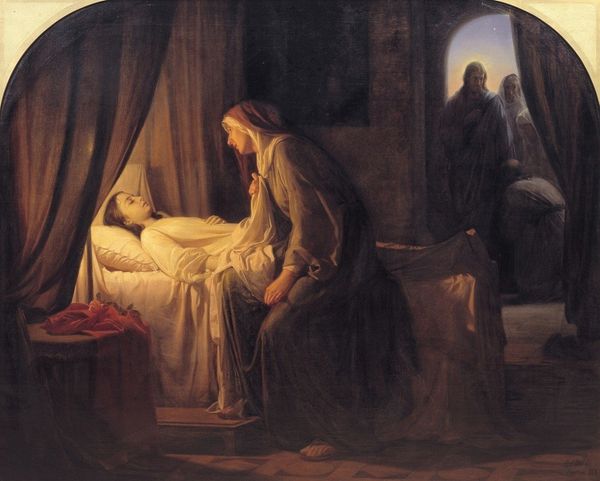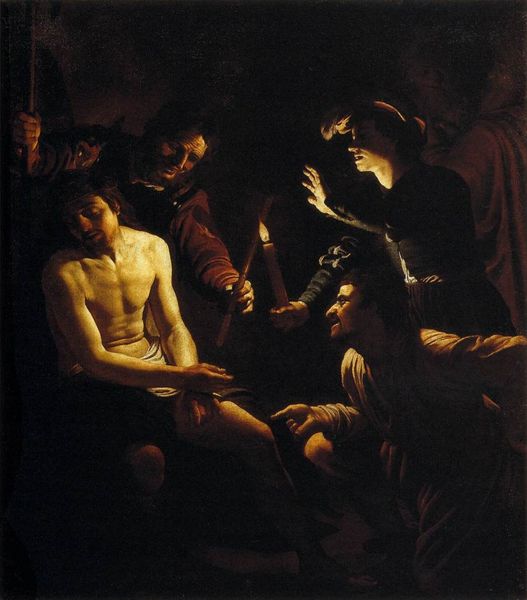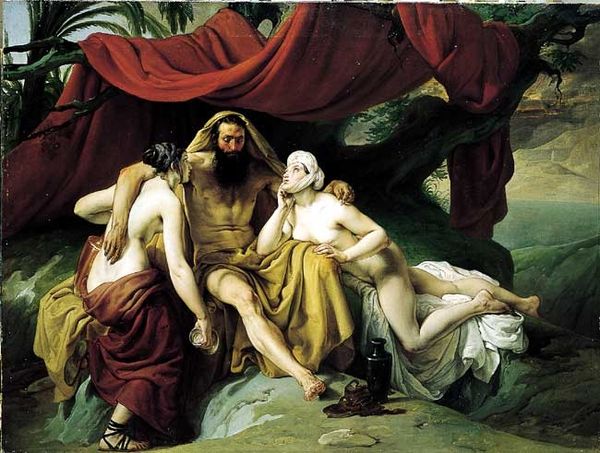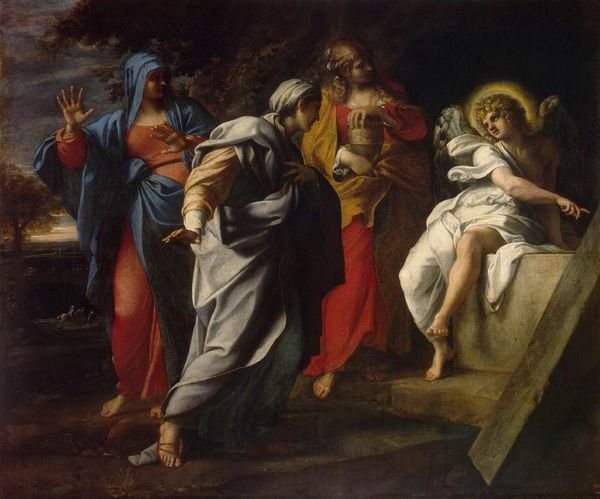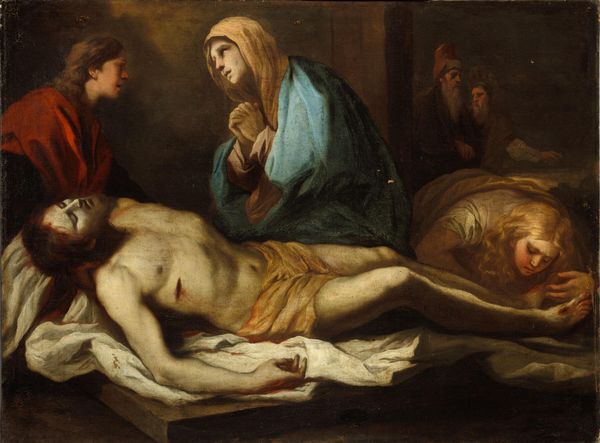
oil-paint
#
allegory
#
oil-paint
#
landscape
#
figuration
#
romanticism
#
history-painting
Copyright: Public domain
Curator: My immediate impression is that this is so melodramatic, like a scene from an overwrought opera! The exaggerated sorrow just oozes from the canvas. Editor: Indeed! The painting is titled "The Burial of Atala," a work completed in 1808 by Anne-Louis Girodet. It portrays a scene taken from Chateaubriand's novel, 'Atala', set in colonial Louisiana. It exemplifies the Romantic era’s fascination with intense emotions and exotic locales. Curator: 'Exotic' is one way to put it. But you can almost smell the decay, the sheer vulnerability of these characters against that dramatically dark cave entrance...it's unsettling, and powerful, even if over the top. Look at the almost hyper-real detail on the foliage! It feels...ominous. Editor: Precisely. Girodet masterfully blends Romantic sensibilities with Neoclassical techniques, giving a striking clarity and detail, particularly in the figures. What's intriguing here is the visual narrative, the way Christianity intersects with indigenous cultures. Atala, who converted to Christianity, dies because of her vow of chastity, leaving behind her love, Chactas. Curator: Ah, yes! That explains the mournful tableau. But let's be real. Doesn't this almost fetishize Atala's death? It’s this beautifully staged tableau of grief that seems more about spectacle than genuine sorrow, with Atala almost theatrically laid out in death, beautiful even in stillness. Editor: Well, perhaps. But consider the context: Early 19th-century France had complex views on religion and empire. This painting, in its own way, touches on the period’s grapple with faith, morality, and the 'New World.' Girodet presents not just a tragic story, but also prompts viewers to reflect on the clash of cultures and ideologies inherent in colonialism. The old hermit, Father Aubry, seems almost to stand between them both; the personification of mediation. Curator: I suppose you’re right; there's always more under the surface than the surface itself, as always. It leaves me pondering the way we romanticize death and other cultures in art. Editor: Agreed. This examination reminds us that paintings are never simply beautiful images. Rather, they actively engage and express their political contexts, provoking conversation for generations to come.
Comments
No comments
Be the first to comment and join the conversation on the ultimate creative platform.


